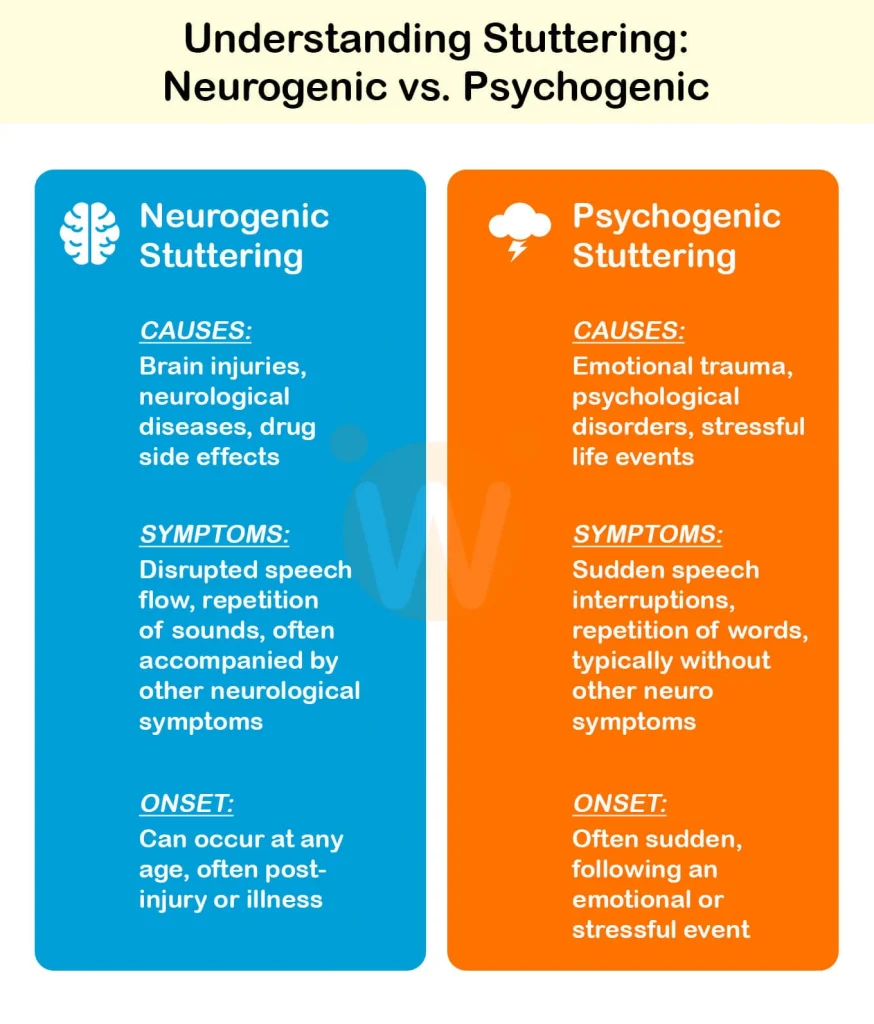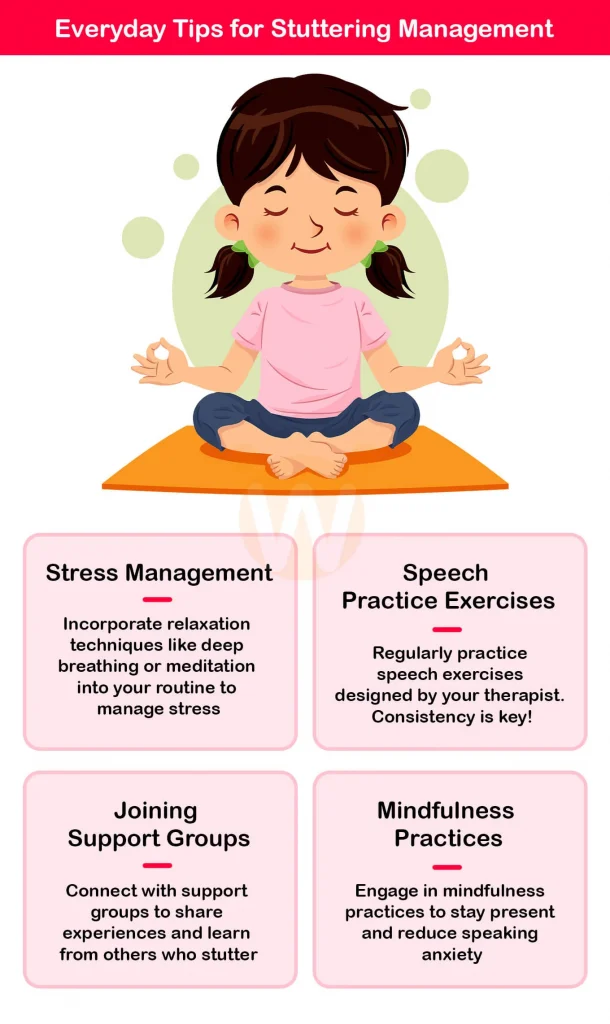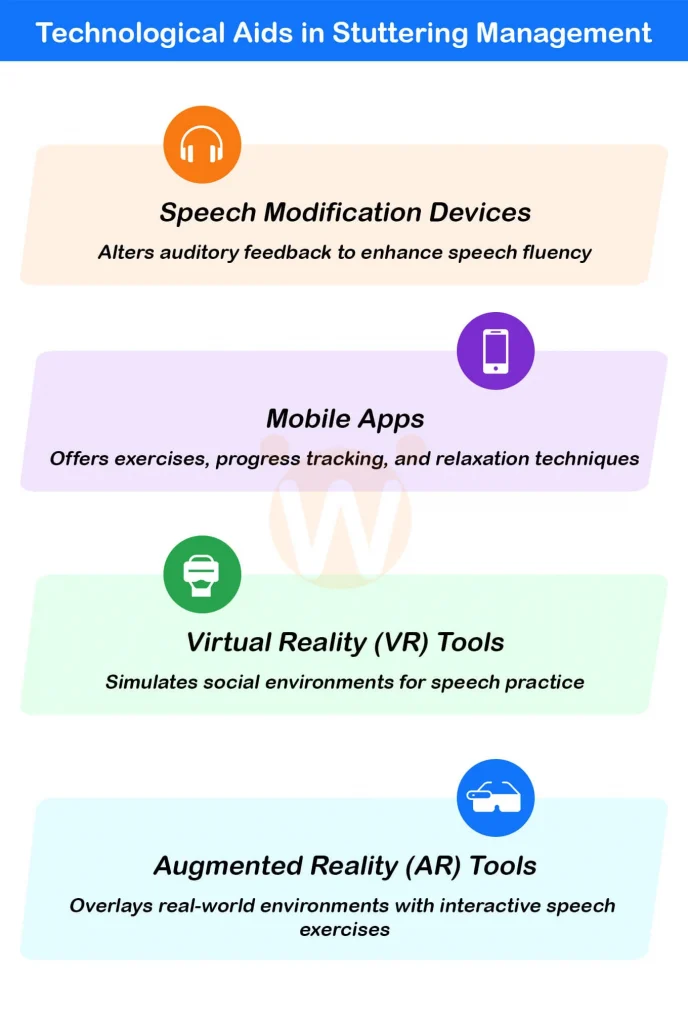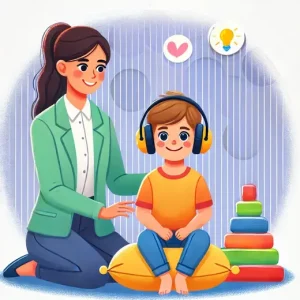Neurogenic Stuttering vs Psychogenic Stuttering: Key Differences Explained
By Rajini D
Last Updated: January 25, 2024
Stuttering – a word that often brings to mind a moment of speech hesitation or repetition. But have you ever wondered why stuttering occurs and how it affects individuals differently? Stuttering isn’t just a one-size-fits-all speech issue; it manifests in various forms, each with its unique causes and challenges.
In our journey to unravel the mysteries of speech, it’s crucial to dive deep into the different types of stuttering. This is not just about understanding a speech disorder; it’s about empathizing with those who navigate these challenges daily. Imagine being armed with knowledge that helps you, or someone you know, navigate the complexities of stuttering. That’s precisely what we aim to achieve here,
We will be focusing on two specific types of stuttering: neurogenic and psychogenic. These forms are distinct, each springing from different sources, and understanding these differences is key to providing appropriate support and treatment. We’re here to explore these differences in depth, breaking down complex medical jargon into simple, digestible insights.
For those new to this topic, you might find our overview on What is Stuttering? Helpful in understanding the basics
Understanding Stuttering

Stuttering, often perceived as an interruption in the natural flow of speech, is more than just a speech disorder. It’s a condition where the rhythm of speech is broken by repetitions, prolongations, or abnormal stoppages (no sounds or words). This can mean repeating certain syllables, extending a word, or taking longer to start speaking. The interesting part is that stuttering varies from person to person and can fluctuate in severity based on the situation.
Globally, stuttering affects about 1% of the population. While it’s more common in children, often beginning between ages 2 and 6, many outgrow it. However, for some, it continues into adulthood. Its impact on communication can be profound, influencing one’s self-esteem, social interactions, and even career choices. People who stutter might avoid certain words or situations, leading to limited participation in activities or conversations.
To delve deeper into early speech development, read about Speech and Language Milestones for Children Aged 2 to 3 Years.
What is Neurogenic Stuttering?
Now, let’s delve into a specific type of stuttering: neurogenic stuttering. Unlike the more common developmental stuttering that typically begins in childhood, neurogenic stuttering can occur at any age. It arises from disruptions in the brain’s communication pathways that control speech and language.
Neurogenic stuttering often results from brain trauma or neurological diseases. This means it can be triggered by events like a stroke, head injury, or illnesses that affect the brain and nervous system, such as Parkinson’s disease, multiple sclerosis, or amyotrophic lateral sclerosis (ALS). The suddenness of its onset often correlates with the incident causing the neurological impact.
The symptoms of neurogenic stuttering are quite distinct. Individuals with this type of stuttering might experience an unusual distribution of stuttering moments across words in a sentence. They might stutter more on function words (like ‘and,’ ‘the,’ and ‘is’) rather than content words (like ‘cat,’ ‘run,’ and ‘happy’). Unlike developmental stuttering, where anxiety can worsen the condition, neurogenic stuttering is less influenced by psychological factors. Therefore, the individual might not feel anxious about speaking, and their stutter does not necessarily improve in more comfortable or less pressured speaking environments.
For more insights into neurological impacts on speech, explore The Speech Chain.
What is Psychogenic Stuttering?
Imagine you’re in a situation that’s emotionally overwhelming. Your heart races, your thoughts whirl, and suddenly, speaking clearly becomes a challenge. This scenario can give you a glimpse into what psychogenic stuttering is like. Unlike neurogenic stuttering, which stems from physical issues in the brain or nervous system, psychogenic stuttering originates from psychological factors. It’s like a mirror reflecting one’s internal emotional turmoil through their speech.
Learn more about managing emotions and speech in our piece on Handling Emotional Impact of Stress.
Psychogenic Stuttering Defined
Psychogenic stuttering is a type of speech disfluency primarily caused by psychological factors. It often arises in the absence of any identifiable neurological or physiological causes. Think of it as a response of the speech system to emotional stressors or psychological trauma.
Psychological Factors Leading to Psychogenic Stuttering Several emotional triggers can lead to psychogenic stuttering. These include:
- Emotional Trauma: Sudden, stressful life events can trigger this form of stuttering.
- Stress and Anxiety: Prolonged periods of stress or anxiety disorders can manifest as speech disfluencies.
- Psychological Disorders: Conditions like depression or post-traumatic stress disorder (PTSD) can also contribute to the development of psychogenic stuttering.
Symptoms and How They Differ from Neurogenic Stuttering Psychogenic stuttering often has a sudden onset following a stressful or traumatic event. The key symptoms include:
- Repetition of sounds, syllables, or words.
- Prolongation of sounds.
- Speech interruptions.
- Unlike neurogenic stuttering, it may not be associated with other neurological symptoms.
Key Differences Between Neurogenic and Psychogenic Stuttering
Understanding the differences between neurogenic and psychogenic stuttering is crucial for proper diagnosis and treatment. Here’s a simplified comparison to help you grasp the key distinctions:
Comparison of Neurogenic vs. Psychogenic Stuttering
| Aspect | Neurogenic Stuttering | Psychogenic Stuttering |
|---|---|---|
| Causes | – Brain injuries (e.g., stroke, trauma) – Neurological diseases (e.g., Parkinson’s, Multiple Sclerosis) – Drug side effects | – Emotional trauma – Psychological disorders (e.g., depression, anxiety) – Stressful life events |
| Symptoms | – Disrupted speech flow – Repetition of sounds, syllables – Accompanied by other neurological symptoms | – Sudden speech interruptions – Repetition of words or phrases – Typically without other neuro symptoms |
| Onset | – Can occur at any age, often post-injury or illness – Gradual or sudden, depending on the cause | – Often sudden, following an emotional or stressful event – Can occur at any age |
| Treatment | – Speech therapy focused on fluency – Possible medical treatment for the underlying condition – Cognitive-behavioral therapy | – Speech therapy focusing on fluency and confidence – Psychological counseling – Stress management |
Remember, stuttering, whether neurogenic or psychogenic, isn’t just a speech issue. It’s a challenge that affects a person’s communication and, in turn, their daily life and emotional well-being.
Also Read: Navigating Online Speech Therapy for Non-Verbal Children: A Guide for Parents and Educators
Diagnosis and Treatment Options
Diagnosing Neurogenic and Psychogenic Stuttering
The path to managing stuttering effectively begins with a proper diagnosis. Understanding whether stuttering is neurogenic or psychogenic in nature is vital as it guides the treatment approach.
- Neurogenic Stuttering: Diagnosing neurogenic stuttering typically involves a comprehensive evaluation by a speech-language pathologist (SLP) coupled with a neurological assessment. This assessment may include brain imaging techniques like MRI or CT scans to detect any underlying brain or nervous system damage.
- Psychogenic Stuttering: The diagnosis of psychogenic stuttering often requires an evaluation of the individual’s psychological history. This includes consultations with mental health professionals, alongside speech-language evaluations, to understand the emotional triggers behind the stuttering.
Treatment Options for Neurogenic Stuttering
- Speech Therapy: Customized therapy sessions with an SLP can significantly improve fluency.
- Cognitive-Behavioral Therapy (CBT): To manage any associated anxiety or communication apprehension.
- Medication: In some cases, medications may be prescribed to address underlying neurological conditions.
Treatment Options for Psychogenic Stuttering
- Psychological Counseling: To address the root psychological causes such as trauma or stress.
- Speech Therapy: Focuses on techniques to improve speech fluency and confidence.
- Stress Management Techniques: Like mindfulness and relaxation exercises.
Remember, professional diagnosis and treatment are key. Self-diagnosis or delaying professional help can lead to the condition worsening or missing out on effective treatment strategies.
Living with Stuttering

Living with stuttering requires patience, understanding, and the right support. Here are some tips for managing daily life with stuttering:
- Embrace Therapy: Regular sessions with an SLP can provide strategies to improve speech fluency.
- Join Support Groups: Connect with others who stutter to share experiences and coping strategies.
- Practice Mindfulness: Techniques like meditation can help in managing stress and anxiety associated with stuttering.
- Educate Others: Raising awareness about stuttering helps in reducing stigma and fostering understanding.
The Role of Technology and Innovation in Stuttering Management

In an era where technology touches almost every aspect of our lives, its influence on health and wellness is particularly profound. This is especially true in the field of speech therapy, where technological advancements have opened new doors for managing stuttering.
Recent Technological Advancements in Treating Stuttering
Innovations in technology have led to the development of various tools that are revolutionizing stuttering management. These advancements range from apps that provide real-time feedback to devices designed to enhance speech therapy techniques.
- Speech Modification Devices: These are wearable devices that alter the user’s auditory feedback. They might delay or alter the sound of the user’s voice, helping to improve fluency in real-time. For many, this instant feedback can make a significant difference.
- Mobile Apps: There are several apps available that are designed to support stuttering management. These apps often include features like speech exercises, relaxation techniques, and progress tracking. They offer a convenient way for individuals to practice their therapy exercises at home or on the go.
- Virtual Reality (VR) and Augmented Reality (AR): These emerging technologies offer immersive environments for practicing speaking skills in a variety of simulated social settings. This can be particularly helpful in reducing anxiety related to speaking in public.
Explore how technology is transforming speech therapy in Is Online Speech Therapy Effective.
Integrating Technology with Traditional Therapy Methods
While technology offers innovative tools for managing stuttering, it’s most effective when used in conjunction with traditional therapy methods. Speech-language pathologists can integrate these technological tools into their sessions, providing a more holistic approach to treatment.
For instance, an SLP might use a speech modification device during a therapy session to help a client experience fluent speech and then gradually reduce reliance on the device as the client’s skills improve. Similarly, mobile apps can be used as homework tools, allowing clients to practice and reinforce what they’ve learned in therapy sessions at home.
Treatment and Management Strategies for Stuttering
| Management Aspect | Neurogenic Stuttering Strategies | Psychogenic Stuttering Strategies |
|---|---|---|
| Speech Therapy | – Personalized fluency exercises to enhance speech flow. – Breath control techniques to regulate speech pacing. | – Speech rhythm and pacing exercises to improve fluency. – Articulation practice to clarify speech sounds. |
| Psychological Support | – Cognitive-behavioral therapy, particularly if anxiety is associated with stuttering. – Strategies to cope with communication-related stress. | – Counseling to address and heal from emotional trauma. – Stress reduction techniques, including coping strategies for anxiety. |
| Technological Aids | – Delayed auditory feedback devices to provide instant speech modification. – Speech-modifying apps to practice fluency-enhancing techniques. | – Speech therapy mobile apps offering guided exercises for stuttering. – Relaxation and mindfulness apps to reduce speech-related anxiety. |
| Lifestyle Changes | – Regular practice of speech exercises to maintain fluency. – Stress management techniques to reduce speech disruptions. | – Participation in support groups for shared experiences and strategies. – Incorporating mindfulness and relaxation practices into daily routine. |
| Family and Social Support | – Educational resources for family members to understand stuttering. – Communication strategies at home to facilitate easier conversations. | – Encouraging open and understanding conversations about stuttering. – Building a supportive and patient environment at home and socially. |
Conclusion
As we conclude our exploration of “Battle of Stutters: Neurogenic or Psychogenic? Understanding the Key Differences,” let’s take a moment to recap the essential points we’ve delved into:
- Understanding the Types: We’ve seen that stuttering is not a monolithic condition but varies significantly, primarily into neurogenic and psychogenic types. Each comes with its distinct causes and symptoms, necessitating different approaches to management and treatment.
- Diagnosis and Treatment: The importance of professional diagnosis cannot be overstated. Whether it’s neurogenic stuttering, often associated with neurological conditions, or psychogenic stuttering, typically stemming from psychological triggers, expert evaluation is crucial. The treatments, ranging from speech therapy to psychological counseling, are tailored to address the specific type of stuttering.
- Technology’s Role: We’ve also highlighted how technology, through innovative apps, devices, and virtual reality, is revolutionizing stuttering management. These tools, when used alongside traditional therapy, can significantly enhance treatment effectiveness.
- Living with Stuttering: It’s not just about treatment; it’s about the journey of living with stuttering. The support systems, mindfulness practices, and the community play an invaluable role in navigating this path.
At Wellness Hub, we understand the complexities and challenges of stuttering. Our platform is dedicated to providing you with the resources, support, and information you need on this journey. Whether you’re seeking professional advice, community support, or the latest in stuttering management techniques, Wellness Hub is here to assist. We believe in empowering you with knowledge and support, making your journey with stuttering one of growth and positivity.
For additional insights into communication challenges, visit Communication Difficulties in Children.
Frequently Asked Questions
1. What is the main difference between neurogenic and psychogenic stuttering?
Neurogenic stuttering typically results from neurological damage or disorders affecting the brain or nervous system, while psychogenic stuttering is often linked to psychological factors like emotional trauma or stress. The key differences lie in their causes, symptoms, and the age at which they occur.
2. Can speech therapy effectively treat both neurogenic and psychogenic stuttering?
Yes, speech therapy is a crucial component in treating both types of stuttering. Neurogenic stuttering often complements medical treatments, while psychogenic stuttering may be combined with psychological counseling.
3. Are there any specific technologies or apps that help in managing stuttering?
Absolutely! There are various speech modification devices, mobile apps, and even virtual reality programs designed to help people with stuttering. These tools provide real-time feedback, speech exercises, and simulated environments for practice.
4. How important is professional diagnosis in treating stuttering?
Professional diagnosis is vital. It helps in identifying whether stuttering is neurogenic or psychogenic, which is essential for effective treatment. A combination of speech-language pathology assessments and, in some cases, psychological evaluations are used for diagnosis.
5. Can stress or emotional trauma cause stuttering in adults?
Yes, emotional trauma or significant stress can trigger psychogenic stuttering in adults. Unlike neurogenic stuttering, which is linked to physical conditions, psychogenic stuttering arises from psychological disturbances.
6. Is it possible for someone to have both neurogenic and psychogenic stuttering?
While rare, it’s possible for an individual to experience both types of stuttering, especially if they have a neurological condition coupled with psychological stressors. In such cases, a comprehensive treatment plan addressing both aspects is necessary.
7. How does Wellness Hub support individuals with stuttering?
Wellness Hub offers a range of resources and support for individuals with stuttering. This includes access to expert advice, information on the latest treatment methods, and a community platform for sharing experiences and tips.
8. What lifestyle changes can help manage stuttering?
Lifestyle changes such as practicing stress-reduction techniques, engaging in regular speech exercises, and maintaining a supportive social environment can be beneficial in managing stuttering. Mindfulness and relaxation techniques can also help alleviate anxiety associated with stuttering.
9. Are there any age-specific considerations in the treatment of stuttering?
Yes, treatment approaches may vary based on age. For children, early intervention is crucial, often involving family-oriented therapy. For adults, treatment may focus more on managing psychological aspects and developing coping strategies.
10. Can stuttering be completely cured?
While there’s no one-size-fits-all cure for stuttering, many individuals can significantly improve their speech fluency and confidence through therapy and treatment. The extent of improvement varies depending on the type of stuttering and the individual’s unique circumstances.
About the Author:
Rajini, Speech-Language Pathologist:
Rajini is a dedicated Speech-Language Pathologist with a focus on developmental speech and language disorders in children and rehabilitation in adults. With a passion for helping each individual find their voice, Rajini brings a wealth of experience and a heartfelt approach to therapy. At Wellness Hub, she’s part of a team that values innovation, compassion, and results-driven practices.
Book your Free Consultation Today
Parent/Caregiver Info:
Client’s Details:
* Error Message









